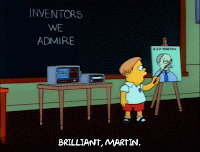As Reiser and Dempsey (2017) state in their text, Trends and Issues in Instructional Design and Technology, lesson design is not solely a matter of content. A lesson that is impactfully designed is “meaningful to the individual learner, memorable to provide sustained performance guidance, and motivational to activate new behaviors” (Reiser & Dempsey, 2017, p. 42). To simplify lesson evaluation by these descriptors, effective lesson design needs to consider its importance to the audience, and its impactfulness in terms of longevity and strength.
It’s impossible to ignore the outcome of technology use in today’s classroom. Beginning with the efficient and effective training of the military with the use of technology during World War II (Reiser & Dempsey, 2017, p. 13), instructional design has proven its ability to affect change. What is critical to this possible impact is attention paid to the process of good instructional design. As proven historically, it’s not enough just to incorporate the media into lessons, but intentional decisions and planning must take place to ensure efficacy.
The advantages of instructional design in terms of its use in education are a result of the iterative system of cyclical reflection and evaluation. This system is applicable for a multitude of subjects from developing instructional design to the mentoring process that we’re examining in EDL 593 (Ingersoll, 2012). As Reiser and Dempsey (2017) state, it is difficult to establish a “final product” as there exists room for improvements and adjustments in instructional design. The continuous growth that instructional design promotes reflects a universal truth regarding examination and adaptation.
There are, however, disadvantages to the process of instructional design. The development is time consuming, a detraction especially in the area of education when needs are constant. When implementing the SAM or Pebble-in-the-Pond model, the end result is not always known in the beginning, requiring a leap of faith for teachers. In many instances, resources are required for the development of instructional design that are not readily available in our field. Despite the disadvantages to using a process for instructional design, the capacity for positive academic growth render it essential in the classroom.
 |
| https://giphy.com/gifs/obama-phil-dunphy-gif-qxSOnFTn8Ogms |
 |
| https://giphy.com/gifs/season-3-the-simpsons-3x10-26tjZHcT2U9Dir1Xa/ |
Good vs Bad
To expand upon personal experiences with instructional design in both good and bad forms, I’ve created a table of the elements of two learning experiences. The example of good instructional design comes from a presentation made by a current educator and member of the Alabama Department of Education. I remember so many aspects of this presentation like it happened yesterday, even though it took place two and a half years ago.
The example I chose for poorly designed instruction was that of my colleagues and myself, when asked to present a new tool to assist with data collection on ELL students. There are a few excuses I could give for the quality of our demonstration, but let me just say that we had very little time to collaboratively prepare, missing out on a crucial design element.
Good Experience
|
Bad experience
| |
Content
|
Learning Targets (creating and implementing)
|
ELLevation (online data collection tool)
|
Audience/situation
|
Faculty/faculty meeting
|
Faculty/small groups of faculty members
|
Duration
|
2 hours
|
20-25 minutes
|
Design Elements
|
Justification for implementation given
Powerpoint
Videos
Practice implementing skills
Reflection time
Discussion time
Handout including additional resources
|
Did not identify problem in advance
Handout only included directions for accessing site
No assigned roles
Vague outline of presentation
Presentation material lackluster
|
The positive learning experience was, using Reiser and Dempsey’s terms, meaningful, memorable, and motivational. I have been a proponent of learning targets since the mentioned presentation, and can remember the specific details of the content because of the use of instructional design. As far as the negative experience goes, I would love to be able to return to the planning stage and change many things about how we handled our task of disseminating the information. There were mistakes made during the instructional design process then that I will certainly avoid in the future.
Reiser, R. A., & Dempsey, J. V. (2017). Trends and issues in instructional design and technology. Boston: Pearson Education.
Ingersoll, R. M. (2012). Beginning Teacher Induction What the Data Tell Us. Phi Delta Kappan, 93(8), 47-51. doi:10.1177/003172171209300811
Weare90skids. (2016, August 2). [Tv cart on wheels meme]. Retrieved from https://twitter.com/WeAre90sKids/status/760679131604541444
Amanda,
ReplyDeleteSomeone once said that experience isn't the best teacher, reflection on experience is. I think you took away valuable information about how not to deliver information. So, thank you for sharing your experience with ELLevation!
Isn't it interesting that for as long as we can remember, technology was only used as a substitute for something tangible that we had in real life? That's pretty poor instructional design. But like you said, it seems that history has refined it and made it better. Now, it seems like more educators have an awareness, on some level (even if they don't know what it's called) of instructional design.
Most teachers also rely on a textbook to simply deliver instruction, instead of intentional decisions and planning. We need a template, an outline, a model. Fortunately, models for instructional design have been refined as well! I look forward to learning more about SAM with you and our classmates. Reiser and Dempsey (2017) state that SAM is "fast, practical, and responsible for producing many award-winning courses of instruction within given constraints" (p.43).
And we all know that education is constrained!!!
Thank you for your insights!
Reiser, R. A., & Dempsey, J. V. (2017). Trends and issues in instructional design and technology. Boston: Pearson Education.